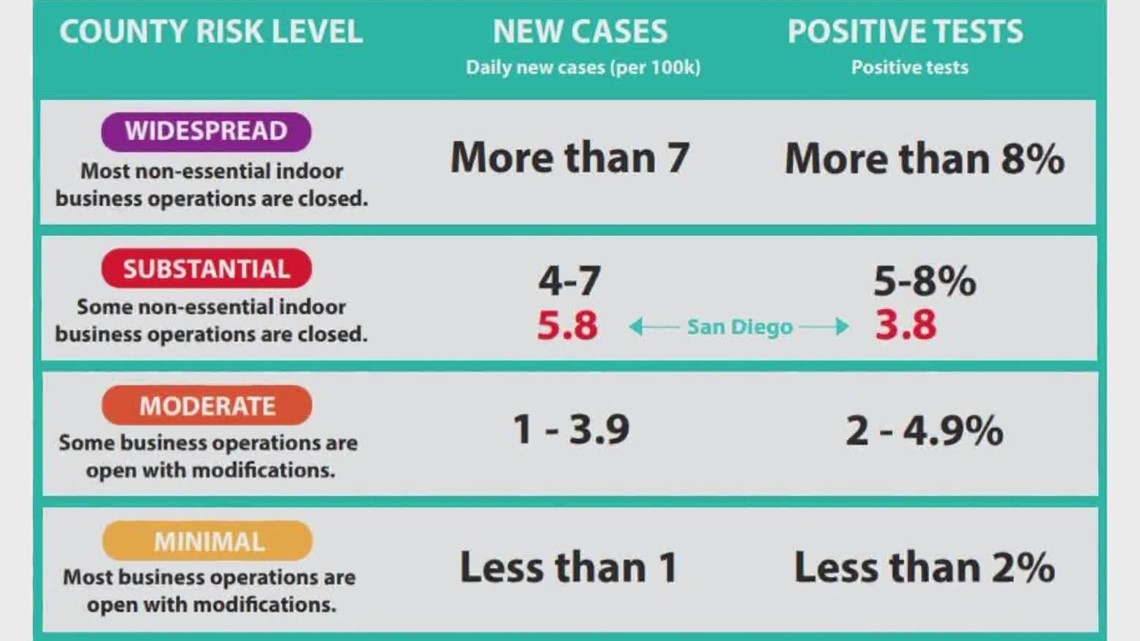SAN DIEGO COUNTY, Calif. — San Diego County’s coronavirus cases increased about 4.5% over the past week, to a total of 39,121 on Wednesday. The case rate remained at 6.2, or Tier 2 under the state’s new tiered reopening system.
Most cities added near the average number of cases. Only the 92101 ZIP code, which includes most of densely populated Downtown San Diego, had a more than 10% increase of cases among ZIP codes with 100 or more cases.
County officials joined representatives from San Diego State University to announce a suspension of in-person classes after 64 students tested positive for COVID-19. Health officials expect the number of cases will continue to rise in the coming days. More than 100 others are in quarantine.
While tracers believe some of the students contracted the virus before arriving in San Diego, the students who test positive will count against San Diego County’s case rate since they are now living locally. So far, none have been hospitalized.
“Young people are less likely to suffer the severe consequences of COVID-19 than older individuals, but this is not a simple cold or flu. You don’t want to get it and you don’t want to pass it on, especially to anyone who is at-risk for a bad outcome,” said Eric McDonald, M.D., M.P.H., San Diego County’s Deputy Public Health Officer, who runs the Epidemiology and Immunization Services branch.
San Diego must have a case rate lower than 3.9 to move into a lower tier and reopen more businesses.
The state also requires counties to meet new equity requirements to ensure all residents have access to testing, tracing and treatment.
“I think we'll be certainly one of the first states to really put down a measure around how counties are doing on focusing on equity. Whether that comes in the form of focusing on testing and contact tracing and isolation or one of the other metrics,” said Mark Ghaly, M.D., M.P.H., the state’s Secretary of Health and Human Services.
San Diego County has previously conducted special outreach campaigns in communities that are most at-risk. Most recently, the county enlisted South Bay Community Services and promotoras to help provide information to residents in Spanish-speaking neighborhoods.
The state has not released the exact framework counties will need to follow and how it will be gauged.
“It has been an important part of our entire framework to focus on equity. Adding an equity measure is our intention,” said Ghaly. “We want to make sure that we get good input from not just our state and county partners, but also from many community partners who have been working with us all along on decreasing disparities and focusing on equity.”



